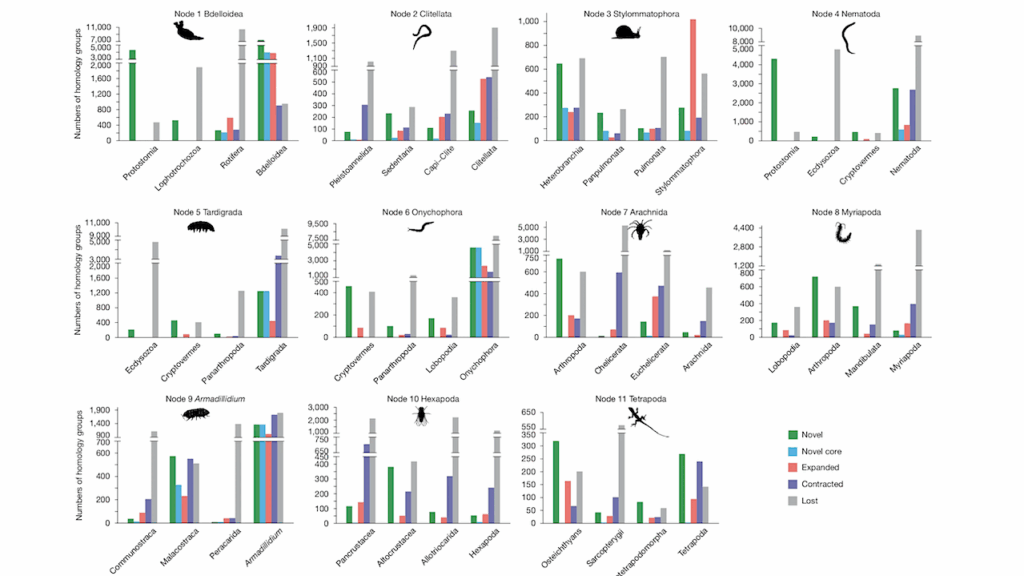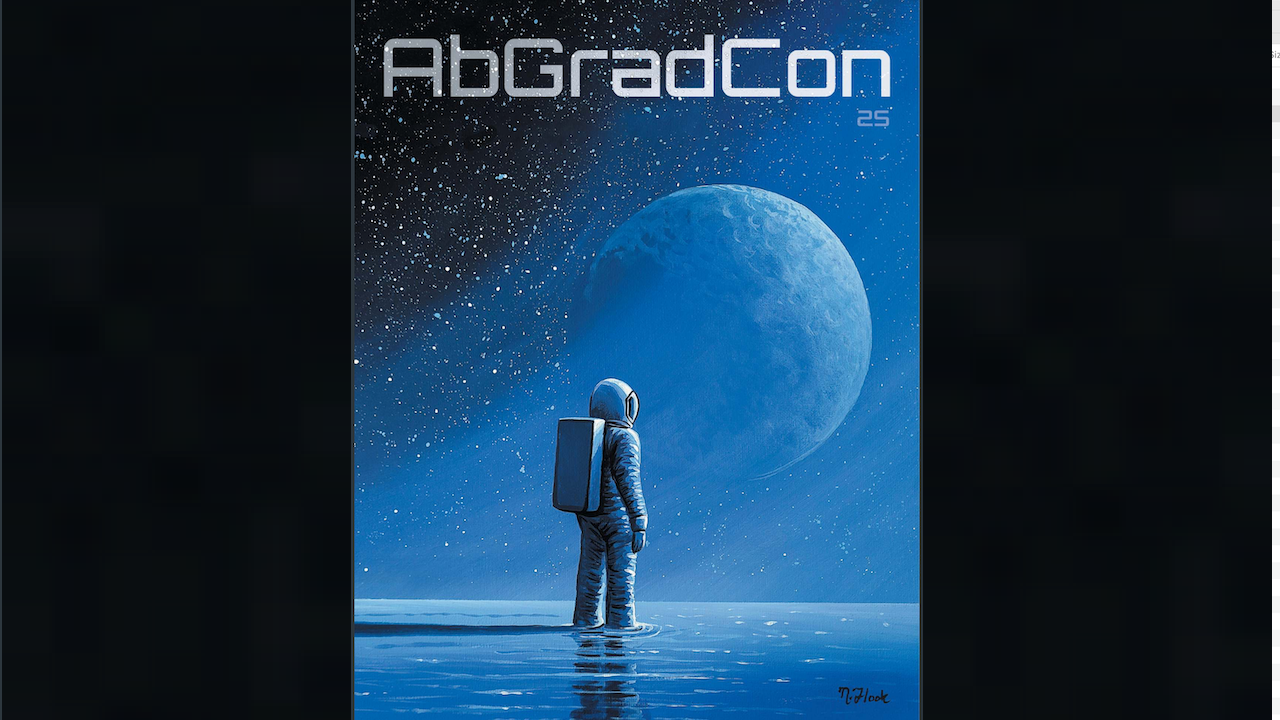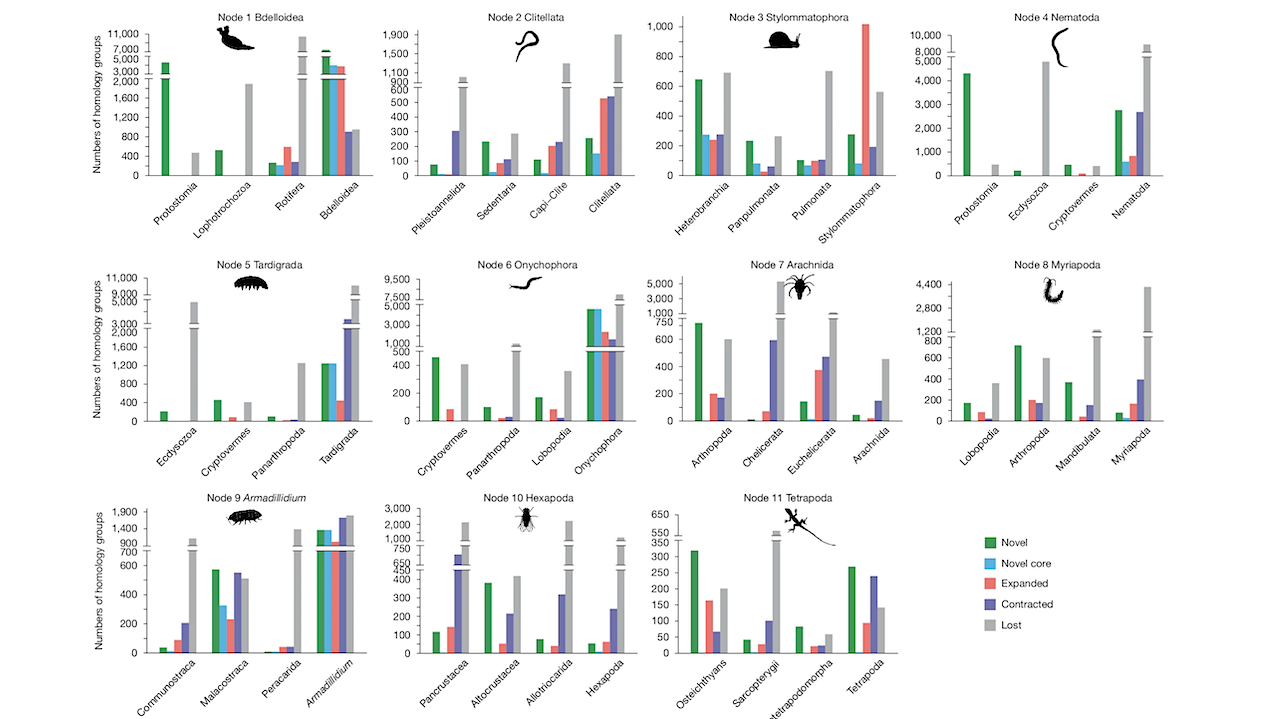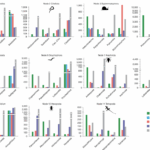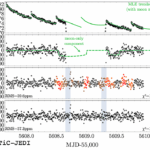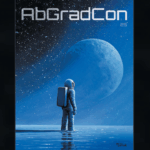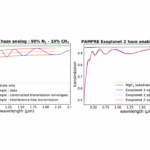Now Reading: A JWST Transit Of A Jupiter Analog: II. A Search For Exomoons
-
01
A JWST Transit Of A Jupiter Analog: II. A Search For Exomoons
A JWST Transit Of A Jupiter Analog: II. A Search For Exomoons

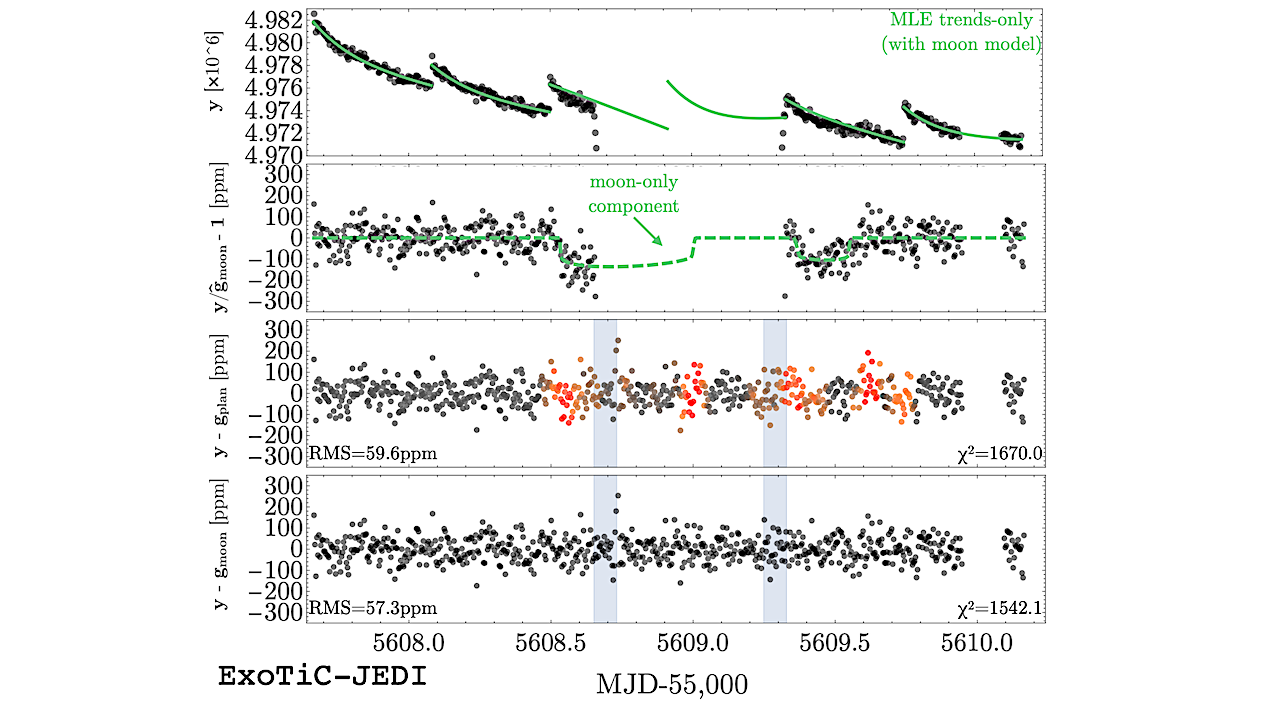
Overview of the ExoTiC-JEDI exp results. — astro-ph.EP
We present a search for exomoons around the Jupiter-like exoplanet Kepler-167e using a NIRSpec JWST transit.
Our 60 hour time series clearly reveals the enormous impact of long-term trends in NIRSpec data, specifically a gradual flux drift occurring over each of six 10 hour exposures. We weighed the evidence for exomoons by comparing a planet-only model with a planet+moon model for a grid of twelve different analysis choices.
Our grid was comprised of three different reduction pipelines and four different models for the exposure-long trends – two using linear models and two using Gaussian processes. Seven grid realizations indicate a strong exomoon detection, typically favoring a Roche-skimming orbit roughly 10% the size of the planet.
We find that the only likely real astrophysical feature driving these fits is a syzygy-like event occurring almost exactly mid-transit, which is highly ambiguous with a spot-crossing event.
Indeed, we show that a spot of the necessary size is compatible with the earlier Kepler data. Ironically, the fact that JWST is so superior to Kepler means that our fits are effectively driven by a single transit – a regime in which exomoons have enormous freedom to explain non-Gaussian behavior.
We thus strongly urge the next transit be observed in October 2027 to break these degeneracies. Our pilot study to seek transiting exomoons with JWST reveals the profound impact exposure-long trends exert – a cautionary tale for future analyzes of this data – as well as the need for a deeper understanding of this systematic’s cause and modeling best-practices.
David Kipping, Ben Cassese, Quentin Changeat, Daniel Yahalomi, Alex Teachey, Billy Edwards
Comments: Submitted to AAS Journals
Subjects: Earth and Planetary Astrophysics (astro-ph.EP)
Cite as: arXiv:2511.15317 [astro-ph.EP] (or arXiv:2511.15317v1 [astro-ph.EP] for this version)
https://doi.org/10.48550/arXiv.2511.15317
Focus to learn more
Submission history
From: David Kipping
[v1] Wed, 19 Nov 2025 10:31:53 UTC (4,962 KB)
https://arxiv.org/abs/2511.15317
Astrobiology,
Stay Informed With the Latest & Most Important News
Previous Post
Next Post
-
 012024 in Review: Highlights from NASA in Silicon Valley
012024 in Review: Highlights from NASA in Silicon Valley -
 02Panasonic Leica Summilux DG 15mm f/1.7 ASPH review
02Panasonic Leica Summilux DG 15mm f/1.7 ASPH review -
 03How New NASA, India Earth Satellite NISAR Will See Earth
03How New NASA, India Earth Satellite NISAR Will See Earth -
 04And Thus Begins A New Year For Life On Earth
04And Thus Begins A New Year For Life On Earth -
 05Astronomy Activation Ambassadors: A New Era
05Astronomy Activation Ambassadors: A New Era -
06SpaceX launch surge helps set new global launch record in 2024
-
 07Space Force plans new ‘Futures Command’ amid pressure to speed up modernization
07Space Force plans new ‘Futures Command’ amid pressure to speed up modernization













